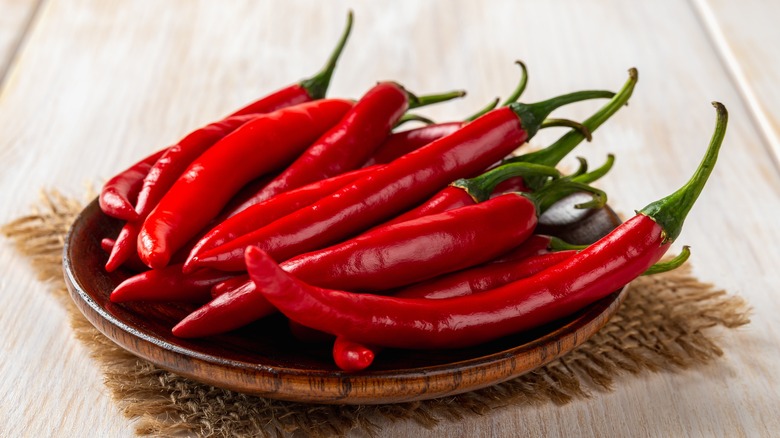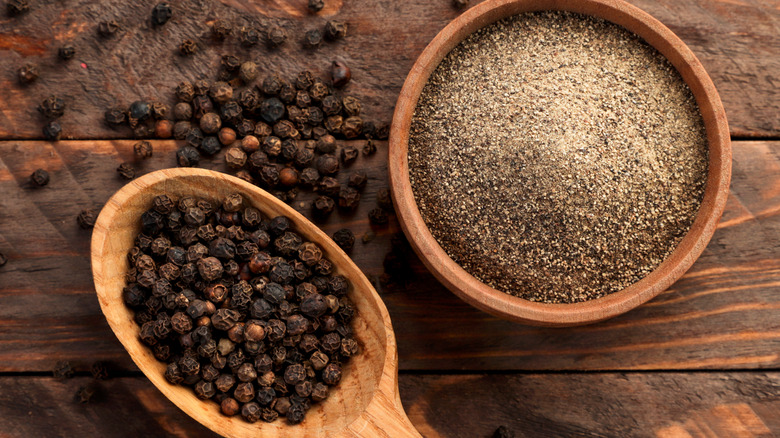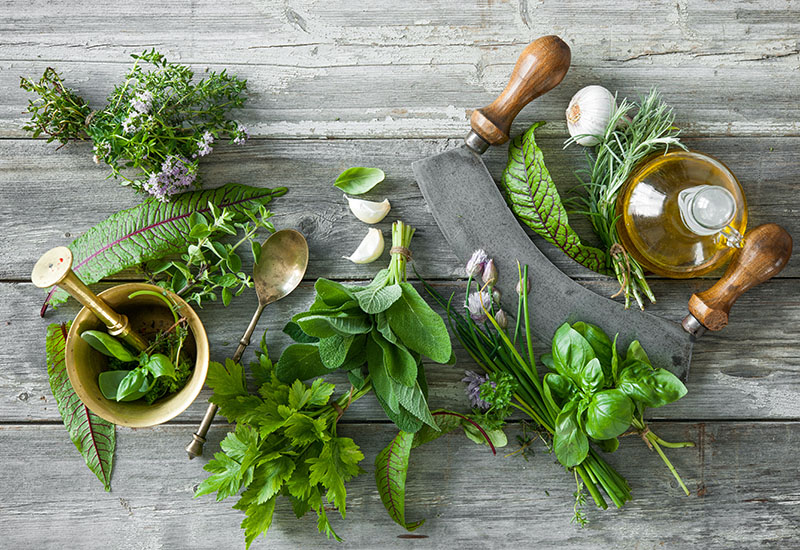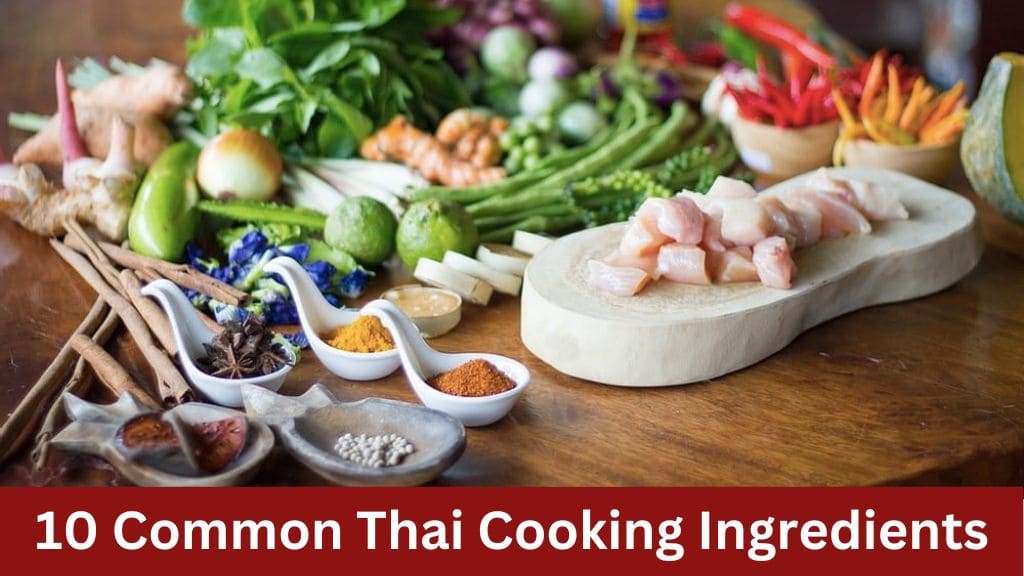Thai cuisine is renowned worldwide for its vibrant flavors, harmonious balance, and aromatic delights. At the heart of Thai cooking lie a handful of essential ingredients that form the backbone of countless dishes. From savory curries to zesty salads, these ingredients play pivotal roles in crafting the distinctive taste profile that defines Thai cuisine. In this comprehensive guide, we delve into the essence of Thai cooking by exploring 10 common ingredients that every aspiring Thai chef should have in their pantry.
1. Thai Fish Sauce (Nam Pla)

Thai fish sauce, known as Nam Pla in Thai, is an indispensable ingredient in Thai cuisine, revered for its ability to impart depth of flavor and umami richness to dishes. Crafted through the fermentation of fish, typically anchovies, with salt, Nam Pla embodies the essence of Thai culinary tradition. Its pungent aroma and savory profile serve as the cornerstone of countless Thai recipes, from fragrant curries to fiery stir-fries.
When selecting Thai fish sauce, it’s essential to choose varieties that contain only anchovies, salt, and water, ensuring purity and authenticity. While Nam Pla boasts an unparalleled depth of flavor, its high sodium content necessitates cautious usage. A little goes a long way, and a judicious hand is required to achieve the perfect balance of savory notes without overwhelming the dish.
2. Curry Paste

3. Coconut Milk

Coconut milk stands as an iconic ingredient in Thai cuisine, renowned for its rich, creamy texture and distinctive tropical flavor. Crafted from the grated flesh of mature coconuts, coconut milk serves as a versatile base for a wide range of Thai dishes, from fragrant curries to indulgent desserts.
There are two main types of coconut milk: fresh and canned. Fresh coconut milk is extracted by blending coconut flesh with warm water and straining the mixture to yield a creamy liquid. While this method offers unparalleled freshness and purity, it requires time and effort to prepare. On the other hand, canned coconut milk provides a convenient alternative, readily available in supermarkets and offering consistent quality and flavor.
In Thai cooking, coconut milk serves as more than just a source of richness—it plays a vital role in balancing flavors and textures, imparting a subtle sweetness and velvety mouthfeel to dishes. From classic curries like green curry and massaman curry to refreshing desserts like coconut ice cream and sticky rice with mango, coconut milk infuses Thai cuisine with its unmistakable tropical essence.
For health-conscious individuals, “lite” versions of coconut milk are available, offering a lower calorie and fat content without sacrificing flavor. Alternatively, regular coconut milk can be diluted with water to reduce its richness and calorie density, providing a lighter option for those seeking a healthier alternative.
4. Lime

Lime, with its vibrant flavor and citrusy zest, occupies a prominent place in Thai cuisine, adding a burst of freshness and acidity to dishes. Whether squeezed over grilled meats, stirred into savory soups, or incorporated into zesty salads, lime serves as a versatile ingredient that enhances the complexity of flavors in Thai cooking.
In Thai cuisine, both the juice and zest of limes are utilized to impart their distinctive tanginess and aromatic essence to dishes. Lime juice serves as a key ingredient in marinades, dressings, and dipping sauces, infusing dishes with a refreshing acidity that balances rich and spicy flavors. Meanwhile, lime zest adds a fragrant, citrusy aroma to curries, soups, and stir-fries, elevating their flavor profile and tantalizing the senses.
While fresh lime leaves are often used in Thai cooking to impart a subtle floral note to dishes, freshly grated lime zest serves as a suitable substitute when they are unavailable. This versatile ingredient allows home cooks to capture the essence of Thai cuisine with ease, infusing their creations with the vibrant flavors of Southeast Asia.
Beyond its culinary applications, lime holds cultural significance in Thai cuisine, symbolizing freshness, vitality, and balance. Its bright acidity and aromatic zest serve as a reminder of Thailand’s lush tropical landscapes and abundant harvests, reflecting the country’s close connection to nature and the land.
5. Rice

Rice serves as the cornerstone of Thai cuisine, anchoring meals with its comforting presence and serving as a canvas for a myriad of flavors and textures. Across Thailand, rice plays a central role in culinary traditions, serving as a staple food that sustains and nourishes communities.
Varieties: Two main varieties of rice dominate Thai cuisine: sticky rice (also known as glutinous rice) and jasmine rice. Sticky rice is prevalent in northern and northeastern regions of Thailand, where it is often enjoyed by hand and serves as a staple accompaniment to savory dishes. Jasmine rice, with its delicate aroma and fluffy texture, is favored in central Thailand and beyond, offering a versatile base for curries, stir-fries, and more.
Healthier Options: For those seeking healthier alternatives, brown jasmine rice or black sticky rice are excellent choices that offer added nutritional benefits. Brown jasmine rice retains the bran and germ layers, providing fiber, vitamins, and minerals, while black sticky rice boasts antioxidants and a unique nutty flavor profile.
Cultural Significance: Beyond its culinary significance, rice holds cultural and symbolic importance in Thai society, representing prosperity, abundance, and hospitality. It is often offered as a gesture of goodwill and shared during communal meals and celebrations, fostering connections and fostering a sense of unity within communities.
Versatility: In Thai cuisine, rice serves as a versatile foundation for a wide range of dishes, from fragrant curries and spicy stir-fries to comforting rice porridges and sweet desserts. Its neutral flavor and ability to absorb flavors make it the perfect accompaniment to bold and vibrant Thai flavors.
6. Chili Peppers

Chili peppers are fiery gems that add a tantalizing heat and depth of flavor to Thai cuisine, elevating dishes with their bold presence and spicy kick. From mild to inferno levels of heat, chili peppers come in various shapes, sizes, and colors, each contributing its unique character to Thai dishes.
Varieties: In Thai cooking, two primary types of chili peppers are commonly used: Thai bird chilies and dried red chilies. Thai bird chilies, also known as bird’s eye chilies, are small but mighty, packing a potent punch of heat. They are often used in sauces, stir-fries, and curries to add intense spiciness and depth of flavor. Dried red chilies, on the other hand, are used to make curry paste and lend a smoky, earthy heat to soups and stews.
Storage: Fresh chili peppers can be stored in the refrigerator for up to a week or frozen for longer shelf life, allowing home cooks to enjoy their fiery goodness at their convenience. In the absence of Thai bird chilies, serrano or jalapeño peppers can be used as substitutes to achieve a similar level of heat.
Health Benefits: Beyond their culinary appeal, chili peppers boast a myriad of health benefits, thanks to their high content of capsaicin, the compound responsible for their fiery heat. Capsaicin is known to boost metabolism, aid in digestion, and even alleviate pain, making chili peppers not only delicious but also beneficial for overall health and well-being.
Cultural Significance: Chili peppers hold cultural significance in Thai cuisine, reflecting the country’s bold and vibrant culinary traditions. They symbolize resilience, vitality, and passion, infusing dishes with a fiery spirit that captivates the senses and leaves a lasting impression on diners.
Versatility: From mild green chilies to fiery red ones, chili peppers offer endless possibilities for culinary experimentation. Whether used fresh, dried, or in paste form, they serve as a versatile ingredient that adds depth, complexity, and a touch of excitement to Thai dishes.
7. Shallots and Garlic
:max_bytes(150000):strip_icc()/all-about-garlic-995693-hero-05-9cce07461e1a42cbbcfd3349e9506d48.jpg)
Shallots and garlic are aromatic allies that play pivotal roles in Thai cuisine, imparting depth of flavor and complexity to a wide array of dishes. These members of the allium family are revered for their distinctively pungent and savory profiles, which enhance the taste and aroma of Thai culinary creations.
Usage: Shallots are often grilled and added to vegetable salsas or thinly sliced for use in salads, imparting a sweet and subtle onion-like flavor to dishes. Meanwhile, garlic is crushed or minced and tossed into hot oil as a flavoring agent, infusing dishes with its unmistakable aroma and savory essence. Together, shallots and garlic form the flavor base for many Thai stir-fries, curries, and soups, adding layers of complexity and depth to each bite.
Versatility: Beyond their individual culinary contributions, shallots and garlic complement each other harmoniously, creating a dynamic flavor duo that elevates the taste profile of Thai dishes. Whether caramelized to impart a rich sweetness or sautéed to release their aromatic oils, shallots and garlic serve as essential building blocks in Thai cooking, unlocking a world of bold and nuanced flavors.
Cultural Significance: Shallots and garlic hold cultural significance in Thai cuisine, symbolizing prosperity, abundance, and vitality. They are valued not only for their culinary prowess but also for their medicinal properties, which have been revered for centuries in traditional Thai medicine.
Tip: Experiment with different cooking techniques to unleash the full potential of shallots and garlic, from slow-roasting to quick-frying, to discover new depths of flavor and aroma in your Thai culinary creations.
8. Black Pepper

Black pepper, with its earthy warmth and subtle heat, is a timeless seasoning that adds depth and complexity to Thai cuisine. Originating from India, black pepper has been prized for centuries for its distinct flavor profile and culinary versatility, making it a staple in kitchens around the world.
Usage: In Thai cooking, black pepper serves as a foundational spice, imparting a gentle heat and aromatic richness to dishes. It is often used in marinades for grilled meats and seafood, as well as in traditional stir-fries and noodle dishes. Its versatility allows it to complement a wide range of flavors, from the bold spices of curries to the delicate sweetness of coconut-based soups.
Cultural Significance: Black pepper holds cultural significance in Thai cuisine, reflecting the country’s historical ties to trade routes and culinary exchange. As a prized spice with a long history of cultivation and consumption, black pepper symbolizes prosperity, abundance, and culinary excellence in Thai gastronomy.
Health Benefits: Beyond its culinary appeal, black pepper boasts a myriad of health benefits, thanks to its high content of piperine, the compound responsible for its characteristic heat. Piperine has been shown to aid digestion, improve nutrient absorption, and even possess anti-inflammatory properties, making black pepper not only delicious but also beneficial for overall health and well-being.
Tip: To maximize the flavor and aroma of black pepper, consider grinding whole peppercorns using a mortar and pestle or a pepper mill, rather than using pre-ground pepper. Freshly ground pepper offers a superior depth of flavor and complexity that enhances the overall taste experience of Thai dishes.
9. Vinegar

Vinegar, a versatile and acidic ingredient, plays a vital role in Thai cuisine, contributing acidity, brightness, and depth of flavor to a variety of dishes. From tangy dressings to zesty dipping sauces, vinegar adds a distinctive tartness that enhances the overall taste profile of Thai culinary creations.
Types: Unseasoned rice vinegar is the most commonly used vinegar in Thai cooking, prized for its mild acidity and subtle sweetness. It serves as a key ingredient in dressings, marinades, and dipping sauces, adding a refreshing tang that balances rich and savory flavors. Cider vinegar can also be used as a substitute for rice vinegar, offering a slightly more robust flavor profile.
Usage: In Thai cuisine, vinegar is used in a multitude of ways, from pickling vegetables to tenderizing meats and seafood. It serves as a flavor enhancer and a preservative, prolonging the shelf life of ingredients while adding a bright and tangy kick to dishes.
Variations: Beyond traditional rice vinegar, Thai cooks often experiment with other types of vinegar, including fruit-infused vinegars and balsamic reductions, to create unique flavor combinations. These variations add depth and complexity to dishes, elevating the dining experience with their nuanced acidity and aromatic notes.
Health Benefits: Vinegar offers a range of health benefits, including aiding digestion, regulating blood sugar levels, and promoting weight loss. Its acidic nature helps to break down fats and proteins in food, making it easier for the body to absorb essential nutrients.
Tip: When using vinegar in Thai cooking, opt for unseasoned varieties to control the flavor profile of your dishes. Adjust the amount of vinegar according to your personal taste preferences, balancing acidity with other flavors to achieve a harmonious blend of tastes.
10. Fresh Herbs

Fresh herbs are vibrant treasures that add an explosion of flavor, aroma, and color to Thai cuisine, elevating dishes with their fragrant presence and distinctive taste profiles. From aromatic cilantro to refreshing mint, Thai basil, and Vietnamese coriander, fresh herbs play a pivotal role in creating the bold and complex flavors that define Thai gastronomy.
Varieties: Thai cuisine boasts a rich assortment of fresh herbs, each contributing its unique flavor profile and culinary versatility to dishes. Cilantro, with its bright citrusy notes, adds freshness to salads and curries. Mint lends a refreshing coolness to savory dishes and beverages, while Thai basil imparts a sweet anise flavor to stir-fries and noodle dishes. Vietnamese coriander, also known as rau ram, offers a citrusy aroma and peppery taste that complements seafood and salads.
Usage: Fresh herbs are used in Thai cooking as both flavorings and garnishes, enhancing the taste and presentation of dishes. They are often added towards the end of cooking to preserve their delicate flavors and vibrant colors. Whether sprinkled over curries, stirred into soups, or tossed into salads, fresh herbs infuse dishes with an irresistible freshness and aroma that captivates the senses.
Cultural Significance: Fresh herbs hold cultural significance in Thai cuisine, symbolizing vitality, abundance, and freshness. They are revered for their medicinal properties and culinary versatility, serving as a testament to Thailand’s rich culinary heritage and deep connection to the land.
Tip: To preserve the freshness and flavor of fresh herbs, store them properly by wrapping them in damp paper towels and placing them in a plastic bag in the refrigerator. Alternatively, you can trim the stems and place the herbs in a glass of water, similar to flowers, to prolong their shelf life.
Conclusion
Mastering the art of Thai cooking begins with understanding and embracing the essential ingredients that form the foundation of this rich and diverse culinary tradition. By stocking your pantry with these 10 common ingredients, you’ll be well-equipped to embark on a flavorful journey through the vibrant world of Thai cuisine. Whether you’re crafting a fragrant curry or a zesty salad, these ingredients will serve as your passport to authentic Thai flavors and unforgettable dining experiences.





